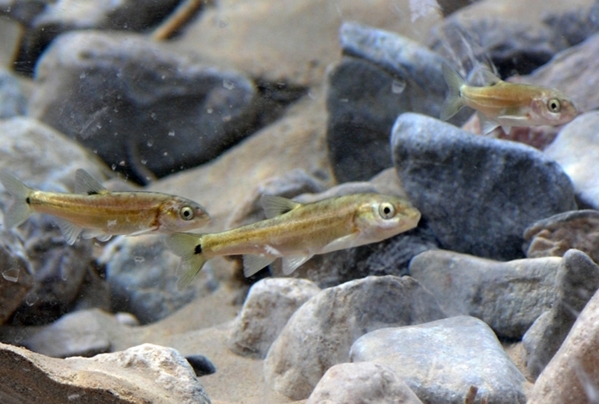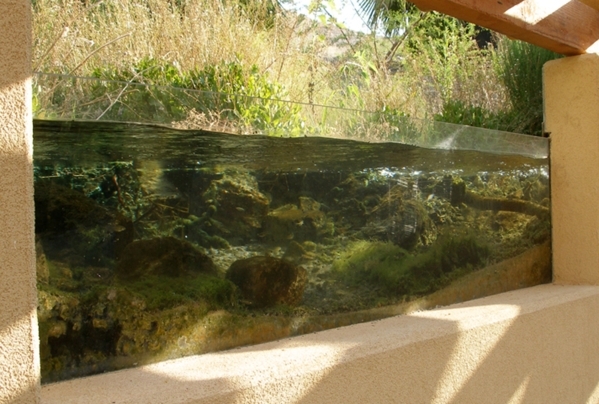Moapa Valley refuge a little-known oasis



One of the smallest parcels within the U.S. Fish & Wildlife Service domain, the Moapa Valley National Wildlife Refuge is a little-known oasis about an hour’s drive from Las Vegas.
The 116-acre refuge protects the Moapa dace, a small endangered desert fish, other endemic species of fish, snails and aquatic insects, as well as birds and wildlife. Facilities are open free of charge from sunrise to sunset Fridays through Sundays from Labor Day through Memorial Day. The refuge is closed in the summer.
Follow Interstate 15 north 60 miles. Exit at Glendale on state Route 168, which runs 21 miles through the upper Moapa Valley to connect with U.S. Highway 93 near Coyote Springs. Drive about seven miles west to Warm Springs Road, a loop access road that returns to Route 168. Turn there and continue about a mile and a half to the refuge entrance on the left.
This short loop road sees little traffic these days. Decades ago, the road led to two popular resorts that utilized several natural warm springs to create swimming pools and bath houses, complete with snack bars, camping, picnicking and an RV park. Children played in the little streams, chasing the quicksilver “minnows” we now know as the Moapa dace, one of the rarest fish in the world. Back then the road carried heavy traffic.
The dace and other inconspicuous but unique desert creatures nearly disappeared, victims of the area’s successful recreational and agricultural development. Scientific study of the desert springs and the life they supported resulted in the creation of a tiny wildlife refuge in 1979, specifically to save the dace.
Among many changes to the valley since settlement in the late 1800s was dense growth on nonnative vegetation introduced for shade and landscaping. Thick stands of palms thrived near the water sources and supplanted less-thirsty desert trees and shrubs. A devastating fire swept through the palms in 1994, ending the era of the swimming resorts. The fire contributed to acquisition in 1997 of private land holdings and several of the natural warm springs that feed the Muddy River flowing through the Moapa Valley. Some parcels were donated to the U.S. Fish & Wildlife Service for inclusion in the Moapa Valley Wildlife Refuge.
To protect the Moapa dace, the U.S. Fish & Wildlife Service devised a plan to restore the desert environment and return the springs and streams to conditions that favor the fish. Work is ongoing to remove nonnative plants and animals. Several species of introduced fish nearly killed off the dace. Streams flowing in channels discouraged reproduction and hatching. Water taken for irrigation, household and municipal purposes lowered the species’ chances for recovery.
Visitors to the refuge today can see the benefits of the agency’s efforts. The three warm springs on the refuge run clear from thermal sources at 90 degrees, just how the Moapa dace like it for mating. The warm water cools somewhat as it flows toward the Muddy River. Many native trees and plants now grow near the water, providing dappled shade. The streams follow winding courses with curves, rocky riffles and calm places for fish eggs to hatch and for small fry to find shelter. Dace grow to 4½ inches or more in the river.
Visitors also get a look at what goes on below the water’s surface. A portion of one spring runs behind the glass of an unusual free-flowing aquarium, creating a window into the aquatic world of the dace, the smaller White River springtail and other native species. An inviting picnic shelter and restrooms are nearby.
One refuge trail takes you to an informational kiosk set up at an overlook. Other paths wander along the waterways, encouraging visitors to explore. Keep youngsters out of the water and dogs on a leash as you follow the trails and read the informational signs.
Find a rock or a bench and sit still to notice the many birds and small desert animals that have returned to the site as its habitat has been enhanced. Since many of them are nocturnal, you may not see them, but volunteers often share photos as they provide information and answer questions.
— Margo Bartlett Pesek’s Trip of the Week appears on Sundays.












